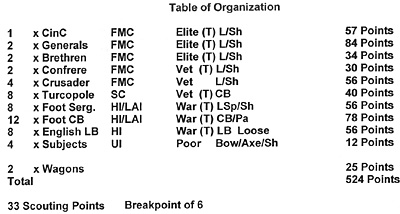The Teutonic Order were ill-equipped numbers-wise to attack an army at least three times its size in a strong defensive position. They were surprised by the horse archers, though why is a question as they had certainly faced them at Liegnitz, but they were not expecting there to be horse archers with Nevsky's army (Nicolle, 79). They also underestimated their opponent and his army. It would not be the last time they would do this.
Alexander rode home it triumph, no doubt with much money, some horses and captured armor as well as prisoners "tied to the harnesses of their own and other captured warhorses" (Nicolle, 79). He pondered his future, however, even in his triumph. The Mongols remained a dire threat to the East, Alexander would henceforth put his energies into keeping a peace of sorts with the Mongols in order to preserve Novgorod. As far as the Teutonic Order, they would continue their crusading efforts and find many new enemies as a consequence, their arrogance unrestrained by this defeat. This same arrogance would manifest itself in yet another defeat, thought this one would be of a much larger magnitude at the hands of the Poles and Lithuanians at the Battle of Tannenberg (or Grunwald) in 1410.
The Knights of Christ
As Eric Christiansen noted in his book, The Baltic Crusades, there was an ancient system of belief in the Medieval period indicating that both wars and warriors required a purification process whereby "The killer contributed to the welfare of his own society by destroying its enemies….The killer may be a hero, but he stinks of death" (70).
Early societies had developed rituals or tribal dances to deal with this situation and forgive the sin of killing. One way was to dedicate the warriors to a 'higher order' maintaining his faith and keeping him in "…harmony with the universe, morally justified even if he massacred the whole of Jericho down to one harlot" (70) using a Biblical motif. Also, there were often a series of ceremonies, which can still be observed in aboriginal tribes, cleansing dances, feasts and such.
The idea of warrior monks developed out of the Crusades. A group of French, Burgundian and Flemish knights formed the first group of protecting warriors to escort pilgrims safely to the Holy Land (Wise, 4). These knights eventually became housed in the royal palace in Jerusalem and became know as the Knights Templars (Wise 5). In the 1120's, the concept of monastic knighthood was promulgated by Bernard of Clairvaux; the purpose being to infuse into a small number of men the ideal of being Christ's soldiers. Those men would take vows of celibacy, poverty and obedience in order to defend the city of Jerusalem (Christiansen 72). In return, their souls would be saved. In a few short years, these knights of Christ had grown into a very powerful and wealthy organization; the Hospitallers..
The supposedly more disciplined than their more secular counterparts, the religious orders could be as unruly and undisciplined in battle as any Western knight as evidenced by their behavior at the Crusading battles of Hattin (1187) and Arsuf (1191). With their growing wealth and prestige, they built castles and fortresses, giving them an advantage over their less financially secure and fractionalized neighbors (Christiansen 73).
In the last decade of the 12th century, another order developed, the Order of the Hospital of St. Mary, which became a military order, the Teutonic Order in 1198. By 1215, Frederick II took the new order under his wing as it was composed of fellow Germans and made the Master of the order, Hermann of Salza, a prince of the Empire -- giving the Teutonic Order money and more power. This would become the most famous of the military orders…and arguably the most violent and greedy.
Bibliography
Christiansen, Eric. The Northern Crusades. University of MN Press, 1980.
Dmytryshyn, Basil. Medieval Russia 900-1700. Holt Rinehart and Winston, NY 1973.
France, John. Western Warfare in the Age of the Crusades 1000-1300. Cornell UP, Ithaca, NY, 1999.
Nicolle, David. Lake Piepus 1242. Osprey Publishing, Oxford, UK, 1996.
Urban, William. The Teutonic Knights - A Military History. Stackpole Books, PA, 2003.
Wise, Terrence. The Knights of Christ. Osprey Publishing, London, UK, 1984.
The Russian Primary Chronicle. Translated by S.H. Cross and O.P. Sherbowitz-Wetzor. Medieval Academy of America, Cambridge, MA, 1973.
Teutonic Order of Battle for MW

Battle of Lake Piepus 1242
Back to Saga # 97 Table of Contents
Back to Saga List of Issues
Back to MagWeb Master Magazine List
© Copyright 2004 by Terry Gore
This article appears in MagWeb.com (Magazine Web) on the Internet World Wide Web.
Other articles from military history and related magazines are available at http://www.magweb.com